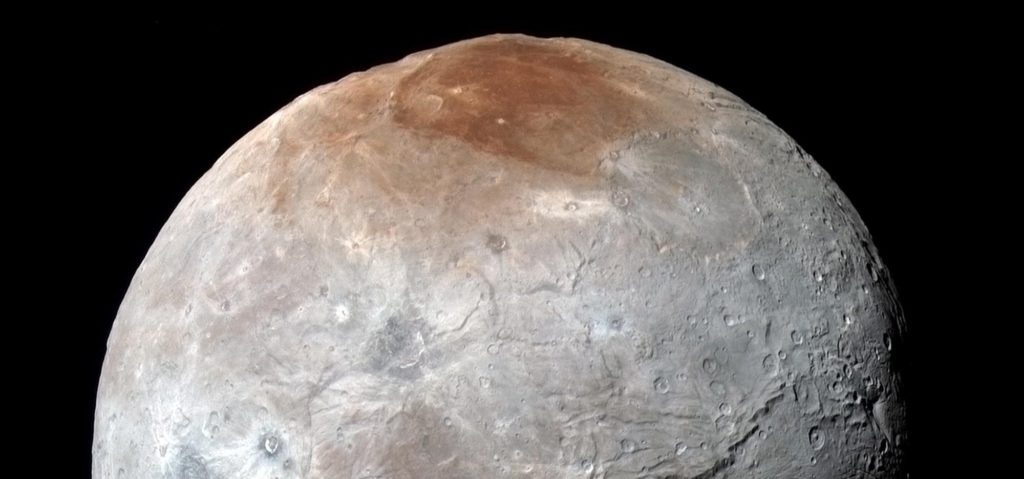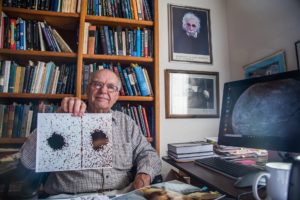
Photo: An enhanced color view of Charon, captured by New Horizons just before its closest approach on July 14, 2015 | NASA/Johns Hopkins University Applied Physics Laboratory/Southwest Research Institute

Jim Christy holds two of the telescope images he used to spot Charon in June 1978 | NASA/Johns Hopkins University Applied Physics Laboratory/Southwest Research Institute/Art Howard/GHSPi
Pluto’s largest moon Charon was discovered in 1978 by astronomers James Christy and Robert Harrington at the U.S. Naval Observatory in Flagstaff, Arizona, located just a few miles away from Lowell Observatory—the discovery place of Pluto itself. Christy discovered Charon when he noticed that Pluto would sometimes appear strangely elongated in some images as he examined them on highly magnified photographic plates. As he tracked Pluto’s movement, he noticed that the mass causing its elongated appearance would move around it, sometimes disappearing completely. A look back at older photographs of Pluto showed the same strange elongated shape, confirming that Christy had indeed discovered that Pluto had at least one moon. Christy dubbed it Charon, after the ferryman of Roman myth who carried souls across the river Acheron to Pluto’s underworld, and because of its resemblance to his wife’s Charlene’s nickname, “Char.”
Equal to roughly half of Pluto’s size, Charon is the largest of the 5 Plutonian moons. In fact, it’s so large in relation to Pluto that the two are sometimes referred to as a double dwarf planet system. The New Horizons spacecraft captured up-close images of Charon during its mission to Pluto, allowing scientists to posit that it’s composed mostly of water ice and rock.